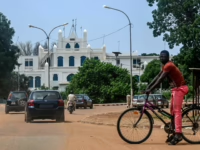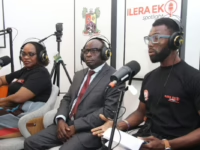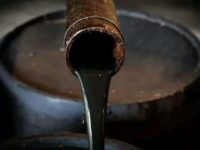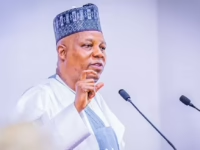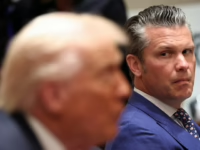The United States has executed its eighth military operation targeting a vessel suspected of transporting illegal narcotics across international waters.
Notably, this latest strike occurred in the Pacific Ocean, marking a shift from previous actions predominantly carried out in the Caribbean Sea.
Defense Secretary Pete Hegseth confirmed the operation on social media, revealing that the strike took place the day before his announcement.
“Under the directive of President Trump, the Department of Defense launched a lethal kinetic strike against a vessel operated by a Designated Terrorist Organization engaged in narcotics trafficking in the Eastern Pacific,” Hegseth stated.
“Two narco-terrorists were aboard at the time of the strike, which occurred in international waters. Both individuals were neutralized.”
A video shared alongside Hegseth’s message depicts a missile hitting a small blue boat skimming across the ocean, which then bursts into flames.
This recent strike expands President Donald Trump’s intensifying military campaign against Latin American drug cartels, raising debates about the scope and legality of such actions.
The administration defends the aggressive bombing strategy as essential for safeguarding American citizens from the dangers posed by illicit drugs.
Framing drug traffickers as enemy combatants, Hegseth reiterated this stance by likening the vessel’s occupants to the terrorist group Al Qaeda.
“Just as Al Qaeda waged war on our homeland, these cartels are waging war on our borders and our people. There will be no sanctuary or clemency-only justice,” he asserted.
However, critics argue that these strikes may contravene both U.S. and international laws, which generally forbid extrajudicial killings outside of active combat zones. Simply designating individuals as terrorists does not legally justify attacks on non-state actors.
Chronology of Air Strikes
CBS News first reported the latest airstrike on Wednesday, citing anonymous U.S. officials. With this attack, the confirmed death toll from the Trump administration’s bombing campaign has reached 34, according to official statements.
The campaign began on September 2, when President Trump announced via social media that he had authorized “a kinetic strike” against a small vessel navigating international waters earlier that day.
Eleven individuals, described by Trump as “terrorists,” were killed in the initial strike. Their identities and the specifics of their mission or cargo were not disclosed.
“Let this serve as a warning to anyone considering smuggling drugs into the United States,” Trump declared, alleging-without presenting evidence-that the passengers were connected to the Venezuelan gang Tren de Aragua.
Subsequent strikes followed: on September 15, a strike in the Caribbean resulted in three deaths, and another on September 19 also killed three.
The campaign extended into October. On October 3, Hegseth announced a strike that killed four individuals, followed by another on October 14 that claimed six lives.
The seventh strike deviated from the administration’s usual pattern of immediate public disclosure.
Typically, President Trump and his team promptly announced strikes on social media, often accompanied by low-resolution aerial footage.
However, on October 16, U.S. media outlets reported the strike first, revealing that two individuals survived-an unprecedented occurrence. The administration confirmed the attack only the following day.
The survivors were swiftly returned to their home countries, Ecuador and Colombia. Ecuador released its survivor, stating there was no evidence linking him to criminal activity.
Colombian President Gustavo Petro defended his country’s survivor as a fisherman unaffiliated with drug trafficking and condemned the U.S. action as murder.
Despite this, Trump insisted the men were aboard what he described as “a very large DRUG-CARRYING SUBMARINE,” confirming that two others were killed in the strike.
The eighth strike occurred shortly after, on October 17, targeting a boat carrying three individuals identified as members of Colombia’s National Liberation Army (ELN), a rebel group.
Earlier strikes had primarily involved vessels linked to Venezuela, whose president, Nicolás Maduro, has maintained a contentious relationship with Trump. Both nations have since increased their military presence in the Caribbean amid the ongoing campaign.





